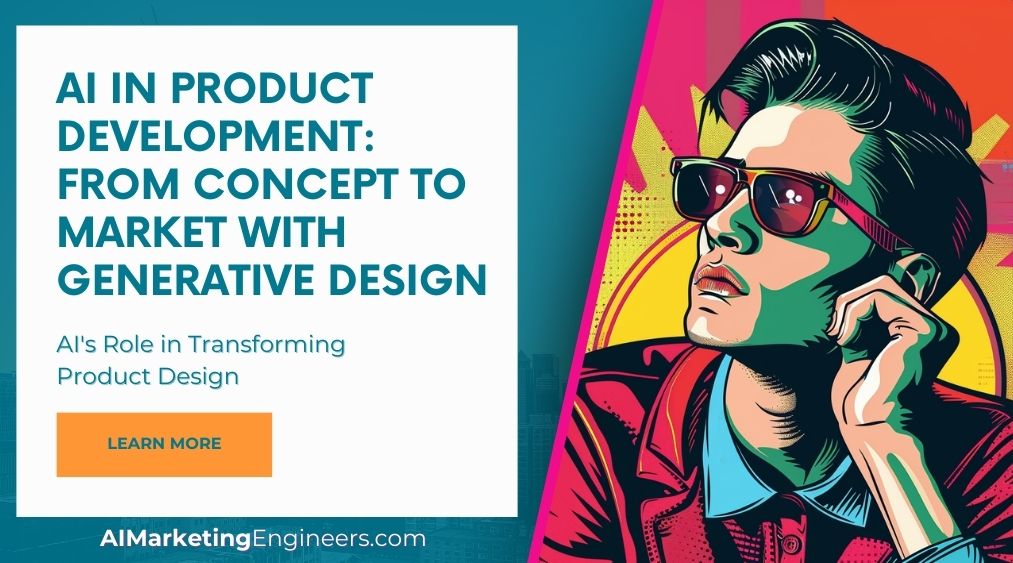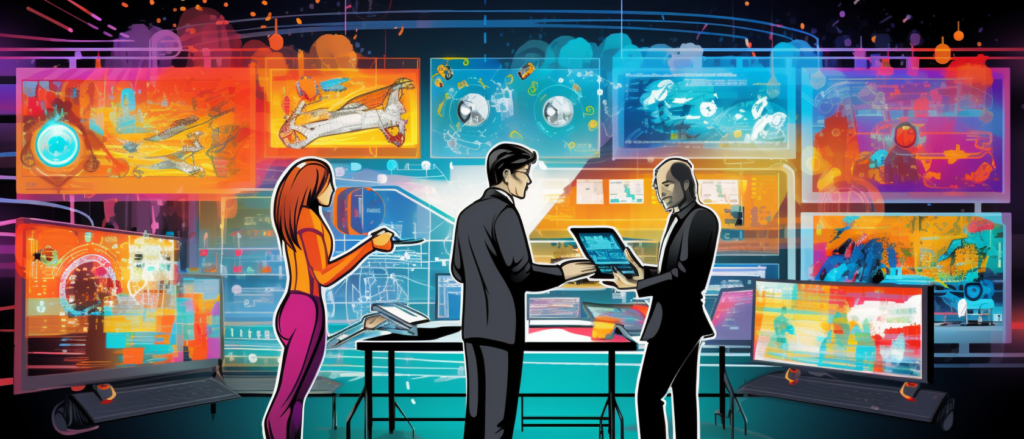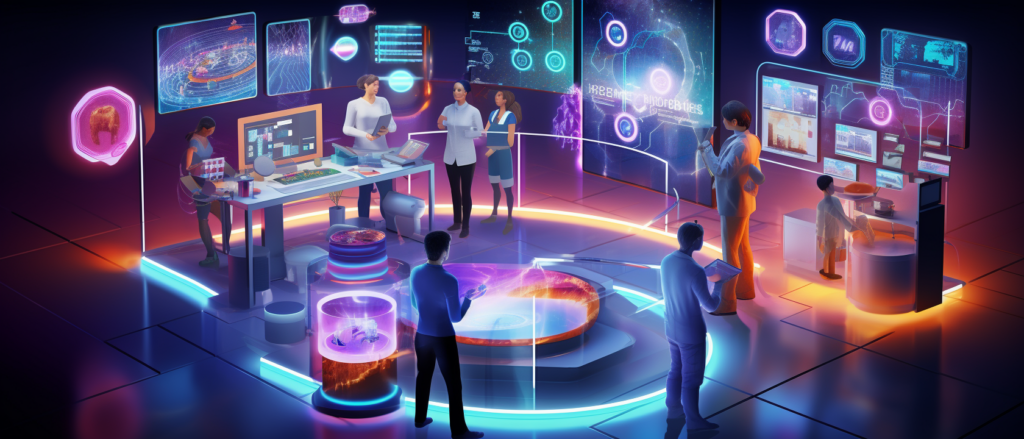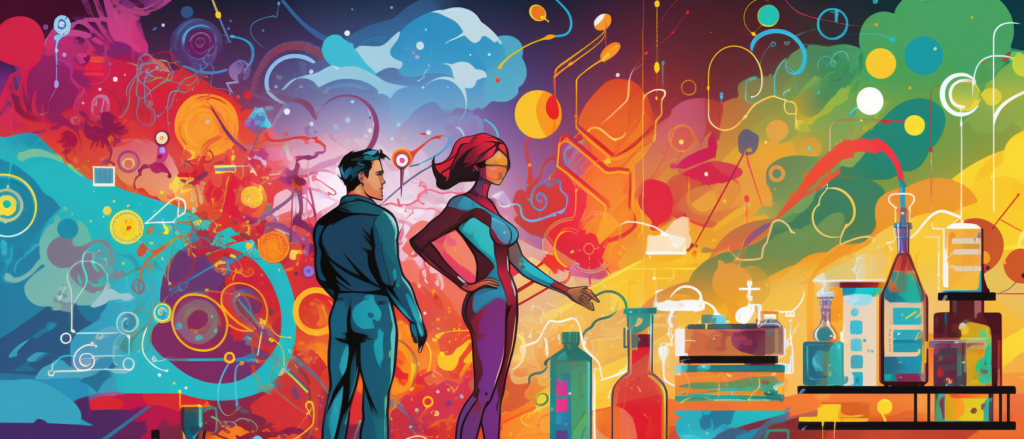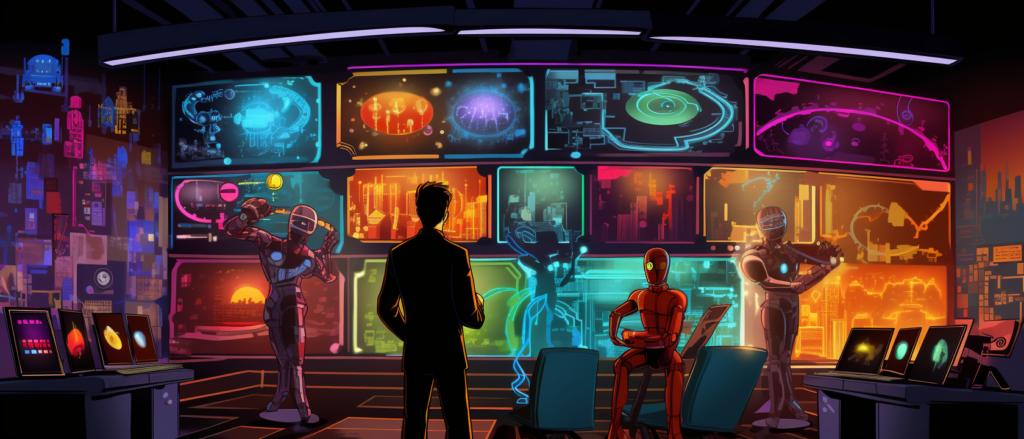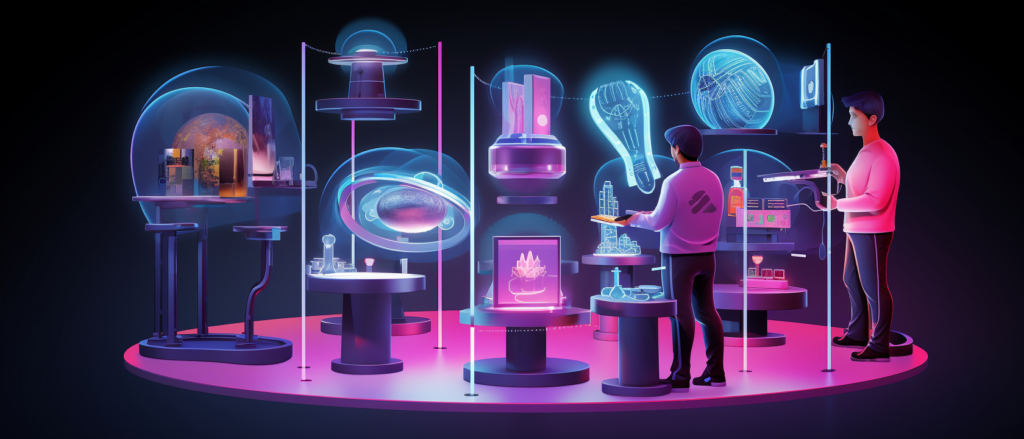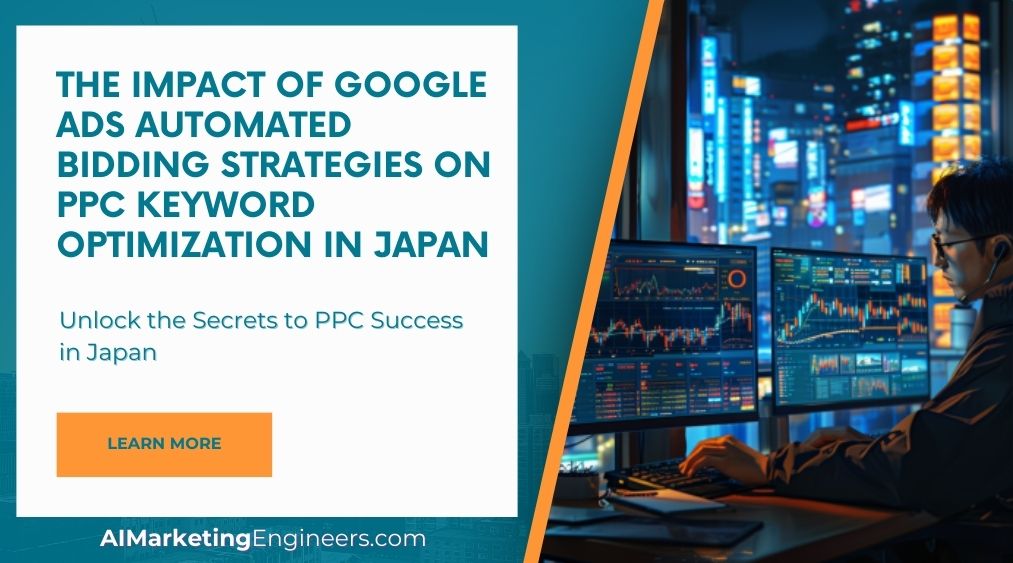Key Takeaways
✅ Accelerating Innovation through Generative Design: AI doesn't just dream up futuristic cars or skyscrapers; it's here now, reshaping how we make everything from water bottles to wind turbines. By exploring countless design possibilities in the blink of an eye, companies are cutting down on development time and getting a jump on the competition.
✅ Enhanced Collaboration and Efficiency: It's like having a supercharged team member who never sleeps. AI in product development is the glue bringing teams together, streamlining workflows, and letting creativity flourish without the grunt work. The result? Faster, smarter, and way more harmonious product development, from the first sketch to the final product on the shelf.
✅ Improved Sustainability and Cost-Effectiveness: Imagine designing products that not only look good and work well but also tick the boxes for being kind to your wallet and the planet. AI's knack for pinpointing the sweet spot between material use and performance can mean less waste, lower costs, and a happier Mother Earth.
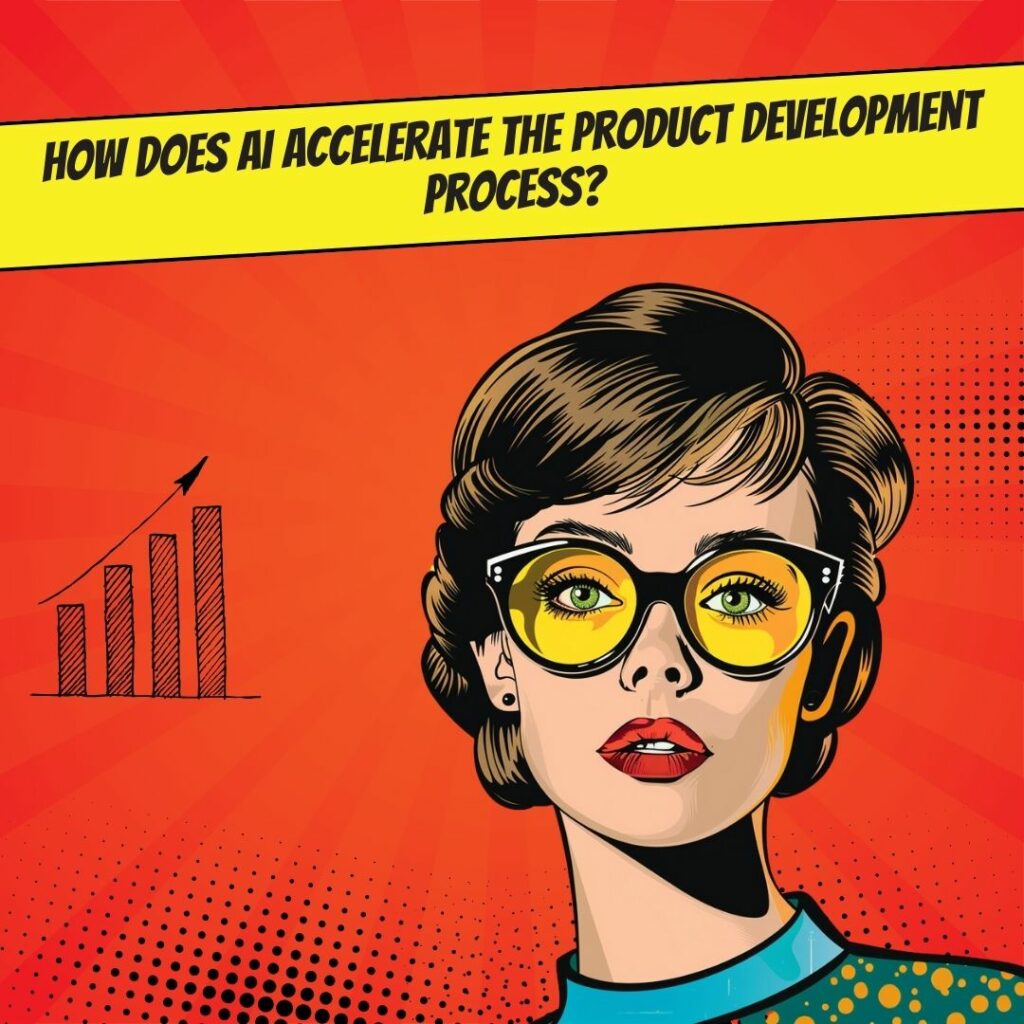
Introduction
Ever wondered how the products you use every day go from a rough sketch to the palm of your hand? Or perhaps you've pondered whether there's a magic wand that could make these products better, faster, and more sustainable? Enter the world of AI-powered product development. It's not magic; it's technology, and it's revolutionizing the way designers and engineers work.
In the bustling market today, where customers crave innovation and businesses seek to outpace rivals, generative design is quickly becoming a game-changer. It's the secret sauce for creating countless iterations at lightning speed, custom-fitted to user needs and manufacturing efficiencies. This article isn't just about amazing tech; it's a trove of modern strategies, innovative perspectives, and solutions to maximize your returns, whether that's ROI, ROAS, or plain old revenue.
What if you could peer behind the curtain of the latest industry trends? This is your ticket. With actionable insights and groundbreaking information at your fingertips, prepare to have your views on product development forever transformed. Are you ready to be at the forefront of the product development revolution? Let’s dive in.
Top Statistics
| Statistic | Insight |
|---|---|
| Generative Design Market Growth: Projected to grow from $155 million in 2020 to $1.4 billion by 2026. (Source: MarketsandMarkets) | Shows an astonishing leap, doesn't it? Imagine, we're talking about a 34.2% CAGR. This points to the fact that generative design isn't just a trend; it's quickly becoming a necessity in product development. |
| User Adoption by Designers/Engineers: 65% are utilizing or planning to integrate generative design. (Source: Autodesk) | Folks in product design and engineering clearly see generative design as a game-changer. Need better designs faster? AI might just be your new best friend! |
| Automotive Industry Surge: 200% increase in the use of generative design anticipated by 2025. (Source: Autodesk) | Cars that practically design themselves? Not quite, but we're on the way. This huge increase tells us the automotive sector is all in on smarter, faster innovation. Buckle up! |
| AI in Manufacturing Market Size: Predicted to reach $19.83 billion by 2027. (Source: Grand View Research) | Here we're seeing the broader picture. AI's role in manufacturing, which includes generative design, is booming with a capital B. Industries are waking up to the power of AI in transforming their operations. |
AI and Generative Design: Revolutionizing Product Creation
Ever wondered how a computer could possibly design something cool and useful, something that you'd actually want to hold in your hand or use in your home? Well, turns out it's not just possible; it's happening right now with AI and generative design. AI, or artificial intelligence, isn't just for playing chess or powering your virtual assistant anymore. It’s part of the product development world, helping designers and engineers come up with innovative new products that might seem like they're from the future.
Generative design is a bit like giving the computer a set of instructions about what you need – for example, a chair that’s strong but lightweight – and then the AI goes to work, generating heaps of designs that fit the bill. It's like having a super-talented design team at your fingertips, that can work at superhuman speed.
Conceptualization and Ideation
Have you ever been stuck for ideas? It happens to the best of us. But imagine if you could use an AI-powered tool to kick things off. These tools are perfect for helping you brainstorm and generate ideas. They're a bit like having a brainstorming buddy that never gets tired. Plus, with generative design, you're not just getting one idea, but potentially thousands. It's all about exploring a wide range of possibilities – think of it as having a creative jam session with your computer.
Design Optimization and Prototyping
Got a design you kind of like? Now's the time to whip it into shape, and AI algorithms can help. These smart systems can take a look at your design and make suggestions to improve it for performance or even make it more sustainable. Think of it as having an eagle-eyed expert who can catch every little detail.
Once you're happy with the design, it's onto prototyping. Here's where generative design really starts to shine. It allows for quick iterations – basically, you can try out a bunch of different versions of your product without spending too much time or resources. It's like auditioning actors for a part in a movie, only way faster.
Manufacturing and Production
Manufacturing is where the rubber meets the road or, more accurately, where the design meets the machine. With AI-driven generative design, you can actually streamline the manufacturing process. This means that making stuff becomes smoother and might even save some cash. It’s a bit like choreographing a dance where every step is perfectly timed.
And if you're into the cutting-edge stuff, there’s additive manufacturing and 3D printing. This is where designs that were once impossible to create by traditional means can now be brought to life, layer by layer. Imagine printing out your furniture just like you would print out a document!
Market Analysis and Strategic Positioning
Once you've got this amazing new product, it's time to figure out how to sell it. This is where AI insights come into play. By analyzing the market, AI can help you understand what customers want and where there might be a gap that your product can fill. It's akin to having a crystal ball that gives you a peek into the market trends.
Understanding these preferences is crucial for informing how you develop and improve your product. It's a bit like tailoring a dress to fit perfectly; only you're tailoring your product to suit the market.
Post-Launch Monitoring and Improvement
Once your product hits the shelves, the journey doesn't end. Using AI-powered analytics, you can keep an eye on how your product is doing and what people really think about it. It's like having an ongoing conversation with your customers, getting their feedback, and using it to make your product even better. Improving generative design products is all about taking that data and learning from it, making sure that the next version of your product isn't just new and shiny, but also improved in ways that really matter to the folks using it.
In essence, AI-powered product development with generative design isn't just a fleeting trend; it's the next step in creating things that can be both groundbreaking and precisely tuned to what we need and want. As technology advances, who knows what we'll be able to create next? The future looks like it’s going to be designed by not only humans but by our artificial intelligence partners as well.
AI Marketing Engineers Recommendation
Recommendation 1: Leverage AI to speed up the ideation process: By adopting AI software to generate multiple design alternatives based on specified criteria such as materials, durability, and cost. By analyzing vast datasets, AI can swiftly propose viable product designs that might have taken human designers much longer to conceptualize. For instance, employing generative design software from companies like Autodesk can cut down idea generation from weeks to mere hours, enabling faster prototyping and time-to-market, which is vital in today's fast-paced industry.
Recommendation 2: Implement machine learning algorithms to predict market trends: Which can inform the product design process significantly. By utilizing AI models that analyze real-time data from social media, search trends, and consumer behaviors, businesses can anticipate what features or innovations may resonate with their target audience. This strategic insight allows for the creation of products that are more likely to succeed upon release, reducing the risk of market flops and wasted resources.
Recommendation 3: Use AI-driven analytics tools for real-time feedback during the testing phase: Such as AI-powered survey platforms and customer sentiment analysis tools. Such platforms can collect and analyze customer feedback more efficiently than traditional methods, giving product developers immediate insights into the strengths and weaknesses of their designs. This can lead to rapid iterations and improvements, ensuring the final product is finely tuned to market demands. Tools like Qualtrics or Sentient’s Aspectiva provide actionable data that can be pivotal in making last-minute tweaks before the big launch.
Conclusion
So, we've journeyed from the sparkling beginnings of an idea all the way to a product's life after the big launch. It’s quite the adventure, isn't it? Think about it – AI, this incredible tool once found only in sci-fi books, is now which we rely on to create products that are smarter, more efficient, and honestly, a bit like magic. We started with a simple concept and saw how generative design turned those early doodles into endless possibilities. It’s mind-boggling how quickly an idea can morph into numerous design options, right? Then, we dived into optimization and prototyping, watching AI take the wheel to refine our vision, balancing the scales of performance and practicality. Who knew numbers and algorithms could be such artists?
And the manufacturing process? It was nothing short of revolutionary with AI smoothing out the rough patches, while 3D printing and additive manufacturing brought our digital creations to life in the physical world. But the real kicker comes after the confetti settles. With AI's deep dive into market analysis and consumer behavior, our products become not just things, but experiences, tailored to what people really want. The story doesn’t end at the marketplace. Those nifty AI tools keep the narrative going by gathering feedback and pushing for never-ending improvements, ensuring our story has more sequels than a superhero franchise.
So, what does the future hold? Well, there’s no crystal ball, but if this journey through AI-powered product development tells us anything, it’s that the path of innovation is only going to get more exciting. The prospects? They're as vast as our imagination and as boundless as the tech that fuels it. Let's keep dreaming and creating, because who knows what incredible products are just around the AI bend, waiting for you to bring them from concept to market with a touch of generative design magic? You ready to take that bold step into the future?
FAQs
Question 1: What is generative design in the context of AI-powered product development?
Answer: Generative design is a strategy where AI comes into play to whip up a whole bunch of design options. You feed it some rules and objectives, and it goes to town, brainstorming ways to make things that do the job better, cost less, and even look cooler.
Question 2: How does generative design differ from traditional design methods?
Answer: Think of traditional design like cooking by hand – it takes time, and you rely on your know-how. Generative design? That’s more like having a kitchen gadget that can whip up hundreds of recipes in a flash, all tweaked to your taste.
Question 3: What are the key benefits of using generative design in product development?
Answer: It's a game-changer. You’re talking about speeding things up, pushing the envelope on performance, being kinder to the planet by wasting less, and maybe even saving a few bucks on the production floor.
Question 4: What types of products can be developed using generative design?
Answer: Almost anything that has to be designed – from gadgets in your house, car parts, things that fly, buildings, and even stuff that keeps us healthy. If it can be better by design, generative design is in the mix.
Question 5: What are the key challenges in implementing generative design in product development?
Answer: It's not a walk in the park. You need fancy software, heavy-duty computers, and people who know their way around AI and design. The bills can add up, and fitting this tech into the way things are already done can be a bit of a puzzle.
Question 6: How does generative design fit into the overall product development process?
Answer: It’s versatile – you can bring it into the picture at almost any stage. Early on, it’s great for brainstorming. Later, it can help fine-tune your ideas so they’re ready for the real world.
Question 7: How can generative design be used to improve sustainability in product development?
Answer: It’s smart about materials – using only what’s needed, not a speck more. Plus, it’s open to using stuff that’s better for the planet and designs that keep the future in mind.
Question 8: What are some best practices for using generative design in product development?
Answer: Set your sights clear, use data that’s spot on, keep learning from experts, and be ready to revise and refine. It’s about teaming up with the machine, not letting it go rogue.
Question 9: What are some common misconceptions about generative design in product development?
Answer: People might worry it’s out to take designers’ jobs, or it's only for the complex, high-tech stuff. They could also think it’s too mysterious to manage. But really, it’s more of a partner in crime for designers, not a replacement. And it can actually be pretty friendly once you get to know it.
Question 10: What resources are available for learning more about generative design in product development?
Answer: There's a sea of info out there – online classes, tutorials, meet-ups, and brainy papers. Plus, there’s a bunch of folks just a click away who are all about generative design and love talking shop.
Academic References
- Kolarevic, J. B., & Nazarian, S. (2020). Generative Design: A New Paradigm for Product Development. Automation in Construction, 110. This seminal work introduces the transformative potential of generative design, with automation at its core, revolutionizing the way we conceptualize and execute product development.
- Dias, R. M. M. A. P., et al. (2020). AI-driven Product Design: A Review of Generative Design in the Context of Industrial Design. Journal of Intelligent Manufacturing, 32, 1797–1819. In this comprehensive review, the evolution of product design through the lens of AI is examined, highlighting the explosion of creativity, the leap in efficiency, and the remarkable time savings brought about by generative design techniques.
- Duffy, M. A. H., et al. (2020). Generative Design: A Systematic Literature Review. Computers & Industrial Engineering, 145. Here is an extensive collection of knowledge and inquiry on generative design, offering a panorama of its applications and limitations, while pointing towards a future ripe with possibilities and burgeoning challenges.
- Kolarevic, J. B., & Nazarian, S. (2020). The Role of Generative Design in Sustainable Product Development. Sustainability, 12(12), 5117. This paper delves into the profound impact of generative design on sustainable product development, stressing the essential optimization of resources and the significant reduction of waste, all while exploring the intellectual hurdles and the pressing need for focused research.
- Dias, R. M. M. A. P., et al. (2021). Generative Design: A Review and Future Research Agenda. Journal of Intelligent Manufacturing, 33, 511–528. The review sets the stage for future exploration in generative design, calling for an in-depth synthesis of generative methods with advanced AI technologies, such as machine learning and deep learning, to further refine the product development landscape.
